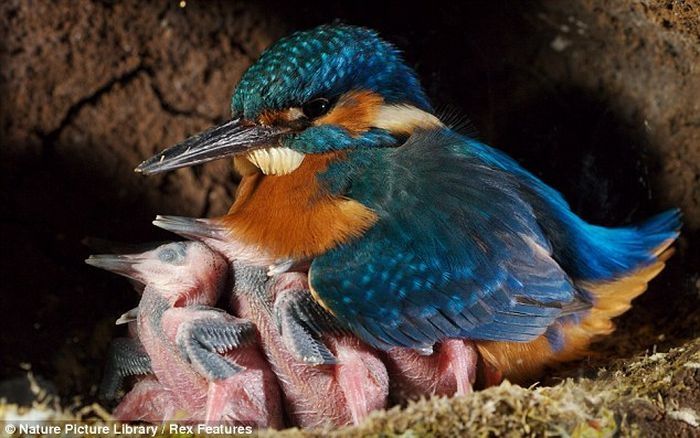|
|
Feeding Kingfishers
|
Kingfishers are a group of small to medium sized brightly coloured birds in the order Coraciiformes. They have a cosmopolitan distribution, with most species being found in the Old World and Australia. The group is treated either as a single family, Alcedinidae, or as a suborder Alcedines containing three families, Alcedinidae (river kingfishers), Halcyonidae (tree kingfishers), and Cerylidae (water kingfishers). There are roughly 90 species of kingfisher. All have large heads, long, sharp, pointed bills, short legs, and stubby tails. Most species have bright plumage with little differences between the sexes. Most species are tropical in distribution, and a slight majority are found only in forests. They consume a wide range of prey as well as fish, usually caught by swooping down from a perch. Like other members of their order they nest in cavities, usually tunnels dug into the natural or artificial banks in the ground. A few species, principally insular forms, are threatened with extinction.
The kingfishers feed on a wide variety of items. They are most famous for hunting and eating fish, and some species do specialise in catching fish, but other species take crustaceans, frogs and other amphibians, annelid worms, molluscs, insects, spiders, centipedes, reptiles (including snakes) and even birds and mammals. Individual species may specialise in a few items or take a wide variety of prey, and for species with large global distributions different populations may have different diets. Woodland and forest kingfishers take mainly insects, particularly grasshoppers, whereas the water kingfishers are more specialised in taking fish. The Red-backed Kingfisher has been observed hammering into the mud nests of Fairy Martins to feed on their nestlings. Kingfishers usually hunt from a exposed perch, when a prey item is observed the kingfisher swoops down to snatch it, then returns to the perch. Kingfishers of all three families beat larger prey on a perch in order to kill the prey and to dislodge or break protective spines and bones. Having beaten the prey it is manipulated and then swallowed.
|
|









